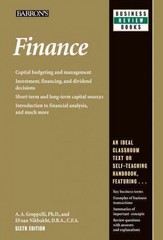Question
12. The combination of securities in a portfolio is determined using the following guideline: _____ The investors primary objectives determine the asset allocation strategy; the
12. The combination of securities in a portfolio is determined using the following guideline:
_____
- The investors primary objectives determine the asset allocation strategy; the investors secondary objectives determine specific securities that are selected
- The investors primary objectives determine specific securities that are selected; the investors secondary objectives determine the asset allocation strategy
C) Neither (A) nor (B)
D) Both (A) and (B) depending on the investors level of risk tolerance
13. A $20 million investment is made in year 1 and the fund increases by 30%. Based on a 10% incentive fee, how much money will the manager earn?
____
- $2 million
- $2.6 million
- $0.6 million
- $1 million
14. Aggressive bond investors are more focused on the capital gains that arise from a change in interest rates. If rates are expected to fall, the short-term speculator can buy ____ and ____ issues to achieve maximum returns if the interest rate forecast is correct.
_____
- Short-term; low-coupon
- Long-term; high-coupon
- Short-term; high-coupon
- Long-term; low-coupon
15. Which of the following attempts to profit from price anomalies between related interest-rate instruments?
_____
A) Long/short equity funds
B) Convertible arbitrage
C) Fixed-income arbitrage
D) Equity market-neutral funds
16. A ____-coupon callable bond might not be a good choice for a ____ managed portfolio regarding the reinvestment rate risk.
_____
- High; passively
- High; actively
- Low; passively
- Low; actively
17. Which of the following is correct?
_____
A) A hedge fund is highly correlated to bond or equity markets
B) A hedge fund has a low correlation with bond or equity markets
C) A hedge fund is negatively correlated to bond or equity markets
D) All of the above can be true depending on the investment policies adopted by a particular hedge fund
18. Financial advisors are required o know the essential details about each client, which include
I. The clients current financial status
II. The clients current personal status
III. The clients risk tolerance
IV. The clients investment goals and preferences
_____
- I, II, III and IV
- I, II and IV
- I, II and III
- II, III and IV
19. What would a successful manager do in a rising market?
I. Go long securities that will rise more than the market
II. Go short securities that will rise less than the market
III. Sell securities that will decline more than the market
IV. Buy securities that will fall less than the market
_____
- I and III
- I and II
- II and III
- III and IV
(The following information relates to Questions 20 and 21)
A portfolio manager purchases shares in YUL that are worth $2,000. At the same time, this manager goes short shares worth $700.
20. What is the net market exposure?
_____
- 50%
- 65%
- 90%
- 45%
21. What is the leverage factor?
_____
- 1.05
- 1.08
- 1.35
- 1.65
22. All of the following are advantages of funds of hedge funds except
_____
- Consistent returns with lower volatility
- Experienced portfolio manager
- Easier access hedge funds
- Liquidity
24. A fixed income portfolio manager who actively rebalances his portfolio weights in government versus corporate bonds in response to beliefs regarding changes in the relative yields on these securities would be referred to as a
_____
- Maturity switcher
- Interest rate anticipator
- Spread trader
- Credit quality manager
25. An investor whose primary investing objective is income would be interested in common shares of a company in an industry in the ____ life cycle stage.
_____
- Emerging
- Initial growth
- Rapid growth
- Mature
26. Duration will always be ____ the bonds term to maturity for coupon bonds.
_____
- More than
- Less than
- Equal to
- Unrelated to
28. XYZ stock has an average annual return () of 15% with an annual return standard deviation () of 50%. What loss level can we expect over a two-year investment horizon with a probability of 17%?
_____
- -35.00%
- -28.12%
- -25.05%
- -40.71%
Step by Step Solution
There are 3 Steps involved in it
Step: 1

Get Instant Access to Expert-Tailored Solutions
See step-by-step solutions with expert insights and AI powered tools for academic success
Step: 2

Step: 3

Ace Your Homework with AI
Get the answers you need in no time with our AI-driven, step-by-step assistance
Get Started


